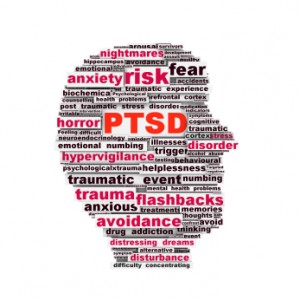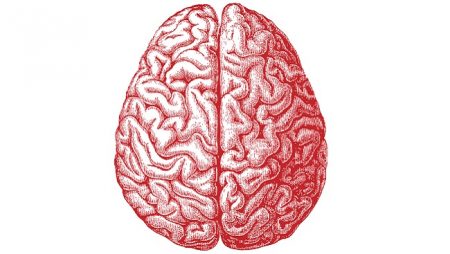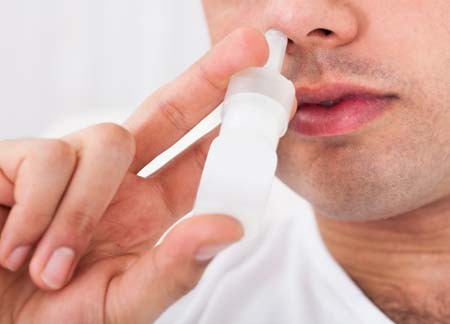“Epigenetic Changes After Trauma May Be Adaptive, Contribute to Resilience”
Originally From Psychiatric News Update
In recent years, research throughout the scientific and medical community has suggested a link between trauma and epigenetic changes, chemical modifications that affect gene activity without actually changing the gene’s DNA sequence. The assumption has been that epigenetic changes in the context of trauma are inherently bad, a form of damage that gets passed from generation to generation. But according to Rachel Yehuda, Ph.D., Endowed Professor of Psychiatry and Neuroscience of Trauma at the Icahn School of Medicine at Mount Sinai, these changes may also be adaptations that promote resilience.
“Sometimes the biological changes in response to trauma or intergenerational trauma are there to help deal with the problem of trauma, not compound its effects,” Yehuda said. “The survival advantage of this form of intergenerational transmission depends in large part on the environment encountered by the offspring themselves.”
Yehuda described this phenomenon as a paradox.
“Parental or ancestral trauma may heighten vulnerability to mental health challenges, but epigenetic adaptations may simultaneously facilitate coping mechanisms,” she said. “Trauma increases susceptibility for psychological distress, but also produces adaptations that help us cope with them.”
Yehuda described research she and her colleagues have conducted to tease out how trauma in parents can affect offspring in the context of the biology of posttraumatic stress disorder (PTSD) in Holocaust survivors and their children. As the research unfolded, Yehuda and colleagues found that survivors’ adult children were more likely to have mood disorders, anxiety disorders, and PTSD than Jewish people whose parents did not directly experience the Holocaust. This was especially true of children of Holocaust survivors who had PTSD. The researchers also found that many children of Holocaust survivors had low levels of the stress hormone cortisol, particularly if their parents had PTSD.
Yehuda and colleagues then conducted a series of studies that looked at the role of glucocorticoid receptors — the proteins to which cortisol must bind to exert its effects — and found evidence that these receptors were more sensitive in people with PTSD.
“In practical terms this means that even though someone with PTSD might have lower circulating levels of cortisol in their blood, their cells might react more strongly to the cortisol that is present,” Yehuda said.
Yehuda said that epigenetics provided further insight on the relationship between hypersensitive glucocorticoid receptors, cortisol, and PTSD. She explained the potential role of methylation, which is a chemical reaction in the body in which a small molecule called a methyl group gets added to DNA or DNA-associated proteins.
“Increased methylation generally impedes RNA transcription, whereas less methylation enhances gene expression,” Yehuda said.
In 2015, Yehuda and colleagues conducted a study involving combat veterans who had PTSD and found lower methylation on an important region on the participants’ glucocorticoid receptor gene. The changes were associated with cortisol and glucocorticoid receptor sensitivity in the study participants, suggesting a potential epigenetic explanation for the association between the trauma of combat and PTSD.
Yehuda said that stress-related epigenetic changes may be reversible. For example, one of the studies conducted by her team revealed that combat veterans with PTSD who benefited from cognitive-behavioral psychotherapy showed treatment-induced changes in the methylation of a gene that regulates glucocorticoid receptor sensitivity. Yehuda said that this finding confirmed that healing is also reflected in epigenetic change.
“That we can transform to meet environmental challenge is a superpower. That is resilience,” Yehuda said.” ?
Yehuda then went on to describe the striking and lasting effects of the psychedelics psilocybin and MDMA in trauma and in helping patients confront their fears in a positive and hopeful fashion. These agents which are given with intensive psychotherapeutic support are not yet FDA approved, but preliminary data suggest that they can have dramatic therapeutic effects in trauma and depression. They can help patients change their attitudes to themselves and the world.
Potential of Environmental Enrichment to Prevent Transgenerational Effects of Paternal Trauma
Gapp, K. et al. wrote about the “Potential of Environmental Enrichment to Prevent Transgenerational Effects of Paternal Trauma” in Neuropsychopharmacol 41, 2749–2758 (2016).
They “used a mouse model of unpredictable maternal separation combined with unpredictable maternal stress (MSUS) to examine the consequences of traumatic stress on coping behaviors in adulthood and across generations, and the potential contribution of (glucocorticoid receptors) GR. We show that MSUS affects avoidance behaviors and learning in aversive environments in exposed fathers and their male offspring. This is associated with an increase in GR expression in the hippocampus, and with decreased DNA methylation of GR promoter in the hippocampus and in germ cells. We show that transmission of the effects of paternal trauma can be prevented by paternal (environmental enrichment) EE, suggesting a reversibility of these effects.”
Editors Note: Dad’s early environmental adversity alter his response to traumatic stress as an adult, and this can be passed to the next generation via epigenetic changes in DNA methylation, histone and microRNA chemical changes persisting in sperm. If the dad with early life adversity is housed in an enriched environment, he does not have the altered response to stress or the changes in GR, and his offspring do not have the transgenerational alterations in stress responsively. This could probably happen in people if we could only figure out to super good environmental enrichment in those having early life adversity. Having lots of stress as a neonate and then being adopted out to wonderful foster family could be the basis for a naturalistic study of this sort of result.
Civil War Data Shows Father’s Trauma Can Affect Son’s Lifespan
An economist at the University of California Los Angeles (UCLA) has used Civil War data to determine that trauma experienced by a father can affect the lifespan of his son, but that a mother’s healthy diet during pregnancy can neutralize this risk.
Researcher Dora Costa used records from the National Archive to identify Union soldiers who were held as prisoners of war (POWs) by the Confederacy. She compared records of their children’s lifespans to the children of Union soldiers who were never held as POWs, finding that the sons of POWs were more likely to have died at any given age. (The study included only children who lived to be at least 45 years old.) Detailed records were kept because families of soldiers and POWs were eligible for generous pensions.
When looking at the data, Costa expected to find that socioeconomic status was the factor that explained discrepancies in lifespans among children of Civil War veterans. However, she noticed that the difference in lifespan only appeared in sons, and only to sons born after the war.
This pointed to an epigenetic explanation. Epigenetics is the idea that some aspects of a parent’s experiences (such as deprivation, drug use, etc.) can be passed on to their children during the gene transcription process. While a parent’s inherited genetic sequence doesn’t change, the structure of their DNA can be wound tightly or loosely depending on life experiences, and this affects how easily their genes are transcribed when passed on to their children.
The sons of POWs in the worst camp environments (typically during the later years of the war when prisoner exchanges were less frequent and overcrowding and malnutrition were common in camps) had even shorter lifespans than the sons of POWs who were imprisoned in less dire circumstances.
The research also looked at birth months to determine whether mothers would have had access to good nutrition while pregnant. Sons born to POW fathers in the later months of the year (whose mothers were likely to have had access to good nutrition) had lifespans comparable to the sons of non-POWs, while sons of POWs born earlier in the year fared worse.
The research was published in the journal Proceedings of National Academy of Sciences in 2018.
Editor’s Note: This is another example in humans of findings that have been clear-cut in animal studies. A father’s experiences, such as stressors or substance abuse, can influence the next generation even if the parent has no contact with the offspring. Epigenetic marks on DNA, histones (the structures around which DNA is wound), or microRNA of the sperm appear to carry these unexpected transgenerational effects.
Inflammatory Marker IL-6 is Elevated in People with Depression and Those with a History of Childhood Trauma
In a 2018 article in the journal Psychiatry Research, researcher Ana Munjiza and colleagues reported that the inflammatory marker IL-6 was higher in 64 depressed people than in 53 non-depressed people, and that levels of IL-6 among people in the depressed group were significantly correlated with scores on a questionnaire in which participants reported traumas experienced in childhood. They reported more physical abuse, physical neglect, and emotional abuse.
Munjiza and colleagues indicate that trauma in childhood is a risk factor for depression in adulthood, as other researchers have suggested, and that inflammation could mediate the relationship between childhood adversity and depression.
Editor’s Note: IL-6 has been associated with antidepressant treatment resistance. IL-6 is secreted from white cells in the blood and from monocytes from the bone marrow in response to stress. It enters the brain and starts an inflammatory cascade that induces depressive behaviors. Animal studies have shown that if IL-6 secretion is blocked, depressive-like behaviors do not occur.
Another indicator of inflammation is CRP, and elevations in CRP have been associated with poor response to selective serotonin reuptake inhibitor (SSRI) antidepressants, and better response to the noradrenergic tricyclic antidepressant nortriptyline and the dopamine active antidepressant bupropion.
Treatments for depressed people with histories of childhood trauma may include psychotherapy, somatic therapies such as repeated transcranial magnetic stimulation (rTMS) and transcranial direct current stimulation (tDCS), and medication. More research is needed to determine the optimal treatment regimens for this subgroup of depression sufferers, including whether anti-inflammatory drugs could play a helpful role in preventing or treating depression. People with elevated inflammatory markers (such as IL-6, CRP, IL-1, or TNF-alpha) are likely to be better candidates for adjunctive anti-inflammatory treatments than those with normal or low baseline levels of inflammation.
Type of Trauma Affects Gene Transcription Effects in PTSD
 In a 2017 article in the journal Neuropsychopharmacology, researcher Michael S. Breen and colleagues analyzed five separate studies of post-traumatic stress disorder (PTSD) and found that sex and type of trauma affected the immunological pathways that changed with PTSD. People with PTSD showed disruptions in gene expression in specific immunological pathways depending on what type of trauma they had experienced.
In a 2017 article in the journal Neuropsychopharmacology, researcher Michael S. Breen and colleagues analyzed five separate studies of post-traumatic stress disorder (PTSD) and found that sex and type of trauma affected the immunological pathways that changed with PTSD. People with PTSD showed disruptions in gene expression in specific immunological pathways depending on what type of trauma they had experienced.
Men exposed to combat traumas showed downregulation in a pathway related to wound healing, while men who were exposed to interpersonal traumas had upregulation in a signaling pathway mediated by the inflammatory marker IL-12. Women exposed to interpersonal traumas showed upregulation of two pathways—one related to lipid metabolism and the other related to MAPK (or mitogen-activated protein kinase) activity.
The participants with PTSD also showed a lot of the same disruptions across all types of trauma, including disruptions that affected cytokine, innate immune, and type 1 interferon pathways.
These data show that immune dysregulation and inflammatory pathways play a role in the pathophysiology of PTSD.
Different Types of Trauma Affect Brain Volume Differently
Post-traumatic stress disorder (PTSD) has been associated with decreased volume of gray matter in the cortex. Research by Linghui Meng and colleagues has revealed that the specific types of trauma that precede PTSD affect gray matter volume differently.
At the 2016 meeting of the Society for Neuroscience, Meng reported that PTSD from accidents, natural disasters, and combat led to different patterns of gray matter loss. PTSD from accidents was associated with gray matter reductions in the bilateral anterior cingulate cortex (ACC) and medial prefrontal cortex (mPFC). PTSD from natural disasters was linked to gray matter reductions in the mPFC and ACC, plus the amygdala and left hippocampus. PTSD from combat reduced gray matter volume in the left striatum, the left insula, and the left middle temporal gyrus.
Meng and colleagues also found that severity of PTSD was linked to the severity of gray matter reductions in the bilateral ACC and the mPFC.
In a 2016 article in the journal Scientific Reports, Meng and colleagues reported that single-incident traumas were associated with gray matter loss in the bilateral mPFC, the ACC, insula, striatum, left hippocampus, and the amygdala, while prolonged or recurrent traumas were linked to gray matter loss in the left insula, striatum, amygdala, and middle temporal gyrus.
Antibiotic Doxycycline May Block PTSD Symptoms
 A 2017 proof-of-concept study suggests that the antibiotic doxycycline can block the formation of negative thoughts and fear memories, perhaps offering a new way to treat or prevent post-traumatic stress disorder (PTSD).
A 2017 proof-of-concept study suggests that the antibiotic doxycycline can block the formation of negative thoughts and fear memories, perhaps offering a new way to treat or prevent post-traumatic stress disorder (PTSD).
In the study by Dominik R. Bach in the journal Molecular Psychiatry, healthy adults who received doxycycline had a lower fear response to fearful stimuli compared to healthy adults who received a placebo. The 76 participants received either doxycycline or placebo and then were taught to associate a color with an electric shock. Later, they were exposed to the color accompanied by a loud sound (but no shock), and their startle response was measured by tracking eye blinks, an instinctive response to sudden threats. Bach and colleagues found that the fear response was 60% lower in those participants who received doxycycline, suggesting that the antibiotic disrupted the fear memory linking the color to a threat.
The theory is based on evidence that doxycycline can inhibit metalloproteinase enzymes, which are involved in memory formation.
While in the study doxycycline was delivered before the fearful event occurred, there is hope that the antibiotic could also do some good after the fact. There is growing evidence that actively recalling a traumatic event can open a ‘memory reconsolidation window’ during which emotions associated with that event are open to change. Bach and colleagues hope to follow up with studies involving this reconsolidation window.
Another line of research is exploring how pain medications may reduce the emotional power of traumatic memories, because intense pain strengthens memory consolidation.
Traumatic Events in Childhood Linked to Shorter Telomeres
Telomeres are bits of DNA at the end of chromosomes that protect the DNA as it replicates. Shorter telomeres have been linked to aging and increases in multiple types of medical and psychiatric disorders. A 2016 article in PNAS, the Proceedings of the National Academy of Sciences of the United States of America, reported that cumulative life adversity and particularly stressful or traumatic events in childhood, predict shorter telomere length.
The study by Eli Puterman and colleagues included 4,590 individuals from the US Health and Retirement Study who reported stressful events that had experienced. A single experience of adversity was not linked to short telomeres, but lifetime cumulative adversity predicted 6% greater odds of having shorter telomeres. This result was mainly explained by adversity that occurred in childhood. Each stressful or traumatic event in childhood increased the odds of short telomeres by 11%. These were mostly social or traumatic experiences rather than financial stresses.
Child Abuse Linked to Adolescent Obesity
 New research clarifies how trauma in early life can lead to obesity in adolescence. In a study of 160 young people between the ages of 9 and 15, researcher Janitza Montalvo-Ortiz and colleagues identified seven sites in the genome where DNA methylation predicted body mass index (BMI) in adolescence. The researchers also collected information on family traumas that occurred during the participants’ childhoods and found that DNA methylation and family trauma such as child abuse interacted to predict BMI.
New research clarifies how trauma in early life can lead to obesity in adolescence. In a study of 160 young people between the ages of 9 and 15, researcher Janitza Montalvo-Ortiz and colleagues identified seven sites in the genome where DNA methylation predicted body mass index (BMI) in adolescence. The researchers also collected information on family traumas that occurred during the participants’ childhoods and found that DNA methylation and family trauma such as child abuse interacted to predict BMI.
Epigenetics describes the ways life experiences can change how easily DNA is turned on or off. While the genes coded by DNA sequences one inherits from one’s parents never change, the structure of DNA can change. DNA methylation is one type of epigenetic change that refers to the addition of methyl groups to promoter regions of DNA in response to life events.
In this research, which was presented at the 2016 meeting of the Society of Biological Psychiatry, Montalvo-Ortiz and colleagues found that the site of DNA methylation with the strongest link to BMI in adolescence was a gene called MAP2K3. This gene had previously been linked to obesity, but this is the first time DNA methylation at this site has been linked to both obesity and childhood trauma. Other relevant gene sites where DNA methylation occurred include ANKRD2, CPXM2, NUBPL, and RFK.
Intranasal Oxytocin Soon After a Trauma May Prevent Worsening PTSD
Oxytocin, a hormone that promotes emotional bonding, also benefits people having trouble dealing with stress. A new study suggests that giving oxytocin for a week shortly following a traumatic experience reduces the risk that the recipient will develop post-traumatic stress disorder (PTSD).
In the study by researcher Mirjam van Zuiden and colleagues, people who visited an emergency room following some kind of trauma were randomized to receive either a placebo nasal spray or intranasal oxytocin twice daily for 7.5 days beginning within 12 days after the trauma. The dosage was 40 IU twice daily.
For those participants with severe PTSD symptoms at baseline, repeated oxytocin administration prevented worsening PTSD. The research was presented at the 2016 meeting of the Society of Biological Psychiatry.





